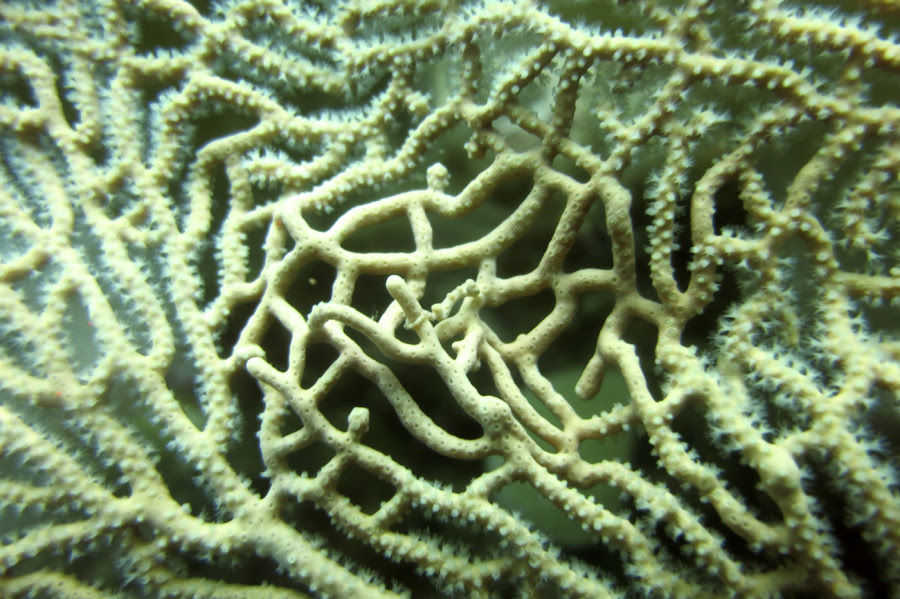Check out "Creature Watch" and learn more about some of the amazing marine life in Raja Ampat.....
CREATURE WATCH
Ornate Wobbegon - Orectolobus ornatus
Kingdom: Animalia Phylum: Chordata Class: Chondrichthyes Sub-class: Elasmobranchii Order: Orectolobiformes Family: Orectolobidae Genus: Orectolobus Species: Orectolobus ornatus
Ornate Wobbegon are commonly found on coral reefs but are often over looked by divers because of their highly camouflaged bodies. They are predominantly ambush predators who lye in wait for their pray, so diver’s who aren’t paying attention to where their going had better watch out! Some species of wobbegon have been observed sneaking up on their pray from a distance. They are able to reach a maximum length of approximately 3 meters and are ovoviviparous meaning that eggs are retained within the female shark in a brood chamber where the embryo is able to develop in relative safety feeding on a yolk sac.
Spot the Seahorse
Denise's Pygmy Seahorse - Hippocamus denise
Kingdom: Animalia Phylum: Chordata Class: Actinopterygii Order: Gasterosteiformes Family: Syngnathidae Genus: Hippocampus Species: Hippocampus denise
Most likely due to its tiny size Pygmy seahorses have only been discovered within the last decade and very little is know about them still. Hippocampus denise is one of the smallest species measuring less than 2 cm in height and are thought to only live on certain gorgonian corals namely; Annella reticulata, Muricella and Echinogorgia, at depths ranging from 13–90 m (IUCN Red List). Current thinking suggests that they feed on the tissue of the gorgonian that they live on or on plankton brought to them on currents. Like other seahorses Pygmies are monogamous and ovoviviparous, where the eggs are carried with in the brooding cavity of the male while the female begins a new cycle.

Blacktip Reef Shark- Carcharhinus melanopterus
Kingdom: Animalia Phylum: Chordata Class: Chondrichthyes Sub-class: Elasmobranchii Order: Carcharhiniformes Family: Carcharhinidae Genus: Carcharhinus Species: Carcharhinus melanopterus
A common occurrence around Barefoot Conservation's house reefs, blacktip reef sharks are usually seen gliding in to the distance by survey teams and on occasion have been know to come in for a closer look for a few lucky divers. Blacktips are considered small as far as sharks go reaching up to 1.8 meters in length. Their most distinctive features are the “black tips” on all of their fins, and are one of three sharks commonly seen in the Indo-Pacific, the other two being the grey reef shark, Carcharhinus amblyrhynchos and whitetip reef shark, Triaenodon obesus. Blacktip reef sharks like most species of sharks are hugely vulnerable to depletion because of their long gestation periods and small litter sizes. Typically they mature at eight years for a male and nine for a female who will gestate for about 10 months with a litter size of two to four pups.


.jpg)
